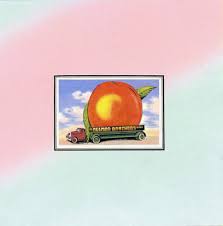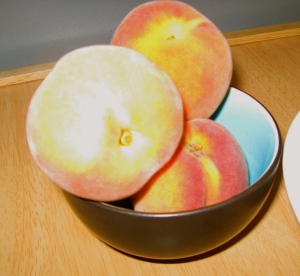
No, they’re not local. But I was recently seduced by the glistening display of fresh, perfectly ripe, organic, (and highly expensive) grapes in the Kroger near our neighborhood. I got two heavy bunches—one in each color—because organic grapes are a rare find, and because children love popping the bouncy-ball-sized fruit in their mouths, and holding them, chipmunk like, for an anticipatory second before bursting the juicy bubbles.
And even though these grapes rode in from California on the wave of petroleum necessary for such a trip, I bought them because I think that tradeoffs between local and organic are sometimes called for. For us eaters in human civilization, food will always be linked to an appetite which might best be described by Freud’s phrase for infantile sexuality: “polymorphously perverse.” (Or you could describe our relation to food with Michael Pollan’s more down-to-earth phrase: “the omnivore’s dilemma.”) Because of the contradictory character of this appetite, we buy foods with different objects in mind (nutrition, variety, flavor, politics, environmentalism, nostalgia, ideology, aroma, convenience, craving), and different reasons will have a different sway at different times. We can be conscientious consumers and still look the other way on occasion. (For example, when Jack’s class took a “field” trip across the street to Checkers for milkshakes, I just looked the other way and cringed. Better that than single him out among his friends and deprive him of a special thrill. Though I admit I felt a perverse thrill when he told me “we walked to Checkers and had milkshakes but then my tummy hurt.”) So, my reasoning about the grapes went like this: We don’t have much organic fruit around here right now. It’s almost high peach season, but I have my reasons for not eating local peaches. We do have a lot of other local food options, and have eaten some wonderful mainly local meals lately: grass fed beef with local organic green beans; local shrimp with local basil and summer squash; braised local lamb with carrots and brussels sprouts.
But what’s wrong with conventionally raised grapes from California? Forty-nine pesticides, seventeen of which the Pesticide Action Network (PAN) describes as “Bad Actors,” and the residues of all of which settle in our bodies. The bunches of grapes banked invitingly in the supermarket often are not even domestic, however. Except during California’s grape season, they are probably from Chile, where it’s still legal to spray them with the ozone-depleting, farm-worker-poisoning, developmental and neurological toxin, methyl bromide. Here’s what the PAN says about this stuff:
* Methyl bromide is a toxic pesticide that is injected into soil before planting strawberries, grapes, almonds and other crops. It is also used to kill pests in stored commodities, in agricultural shipments and in buildings.
* Because of its ability to cause poisonings, neurological damage and reproductive harm, EPA classifies methyl bromide as a Toxicity Category I compound, the most deadly category of substances.
* Methyl bromide is also a powerful ozone depleter and was banned in industrialized countries (including the U.S.) in 2005 under the international Montreal Protocol treaty. (www.panna.org)
Another source, http://www.scorecard.org, “the pollution information site” says that methyl bromide is a “recognized” developmental toxicant and is a “suspected” cardiovascular and blood toxicant, gastrointestinal and liver toxicant, kidney toxicant, neurotoxicant, reproductive toxicant, respiratory toxicant, and skin or sense organ toxicant. That covers all the bases, I think.
Only because it was depleting the ozone layer, though, was it seen as a serious enough threat to phase out its use over twelve years. However, the Bush administration left us another pleasant legacy: so-called “critical-use exemptions”:
Whereas the Montreal Protocol has severely restricted the use of bromomethane internationally, the United States has successfully lobbied for critical-use exemptions of the chemical. In 2004, [the final year before the complete phase-out], over 7 million pounds of bromomethane were applied to California fields, according to pesticide use statistics compiled by the California Department of Pesticide Regulation. The most recent set of ‘critical use’ exemptions in the US include use of Bromomethane for tomato, strawberry, and ornamental shrub growers, and fumigation of ham/pork products. (Wikipedia)
Luckily for us, large-scale California growers began growing table grapes organically in 1989, and their production has only grown since them. I can watch Jack do his chipmunk cheeks in good conscience.







